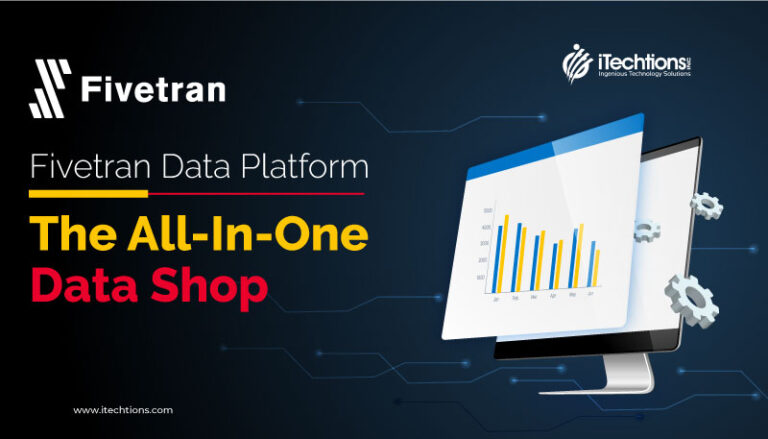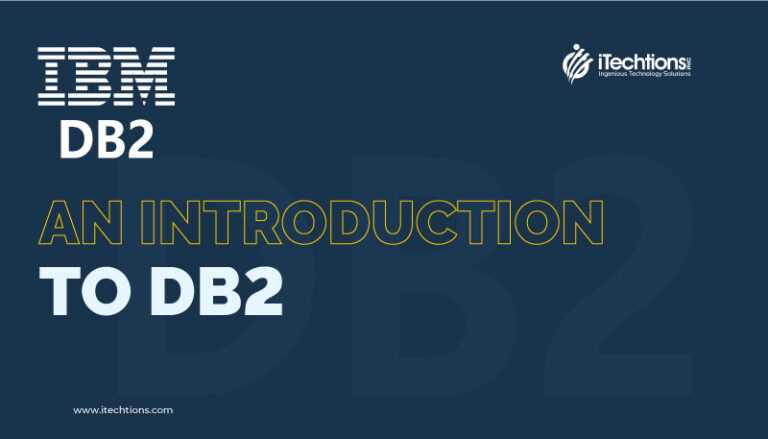Introduction
Snowflake Cloud Data Warehouse is a revolutionary cloud data platform that has taken the data warehouse marketplace by storm. It was officially launched in October 2014 after two years of operating in stealth mode. Snowflake has quickly expanded its capabilities to handle a wide range of workloads, including Data Warehousing, Data Engineering, Data Lakes, Data Science, and Application development and transaction processing.
Understanding the nature and functionality of Snowflake Cloud Data Warehouse is of utmost importance and relevance in today’s technology-driven world. With the increasing reliance on data analytics and the need for scalable and efficient data storage solutions, Snowflake provides a cutting-edge platform that addresses these critical needs. By separating storage and compute, Snowflake offers instant elastic scalability, allowing businesses to easily adapt to evolving demands. Additionally, its unique features such as data sharing and cloning further enhance its efficiency and versatility.
Moreover, the wide ecosystem of third-party connectors, drivers, programming languages, and utilities supported by Snowflake ensures extensive accessibility and compatibility. This enables businesses to seamlessly integrate Snowflake into their existing systems and tools, enhancing the overall efficiency and effectiveness of their data operations.
Furthermore, Snowflake’s ability to handle both analytic queries (OLAP) and transaction-based workloads (OLTP) in a single cloud-based solution greatly simplifies data management.
Businesses can leverage a unified platform to manage all types of data, from structured to semi-structured and unstructured data. This not only improves the efficiency of data processing but also facilitates better decision-making processes through enhanced data insights.
Overall, understanding and harnessing the power of Snowflake Cloud Data Warehouse is essential for organizations looking to stay ahead in today’s data-driven world. Its unique architecture and extensive capabilities make it a game-changer in the data warehouse landscape, enabling businesses to achieve greater agility, scalability, and efficiency in their data analytics and storage operations. So, let’s dive deep into the intricate details of Snowflake and discover how it can revolutionize your data management and analytics practices.
Architecture of Snowflake Cloud Data Warehouse
Separation of storage and compute
One of the key architectural aspects of Snowflake Cloud Data Warehouse is the separation of storage and compute. In this architecture, the data storage and compute resources are decoupled, allowing them to scale independently. The separation enables organizations to scale their compute resources up and down depending on the workload, without affecting the stored data. This design ensures optimal performance and cost-effectiveness, as compute resources can be provisioned as needed without disrupting ongoing data operations.
Benefits of the architecture
By separating storage and compute, Snowflake provides several benefits. First, it allows organizations to only pay for the compute resources they actually need, resulting in cost savings. Organizations can scale up the compute resources during peak usage periods and scale them down during off-peak hours, optimizing resource utilization and minimizing expenses. Secondly, the separation of storage and compute ensures that data remains highly available even during compute resource failures. Organizations can easily replace or upgrade compute resources without any impact on the stored data, ensuring continuous operations and data accessibility.
Instant elastic scalability
Snowflake Cloud Data Warehouse offers instant elastic scalability, which is a significant feature of the platform. This means that organizations can dynamically increase or decrease their computing resources based on demand, without any downtime or reconfiguration. Snowflake enables users to scale their compute resources up or down with just a few clicks, providing flexibility and agility to accommodate sudden changes in workload or business needs.
Significance of the feature
The instant elastic scalability feature in Snowflake is significant because it allows organizations to respond quickly to changing demands. For example, during peak usage periods, such as the holiday season for an e-commerce company, the platform can automatically scale up the compute resources to handle the increased workload efficiently. This ensures that queries and data processing continue to perform optimally, providing a seamless experience for users. On the other hand, during periods of lower demand, compute resources can be scaled down to save costs and optimize resource utilization.
Data sharing and cloning capabilities
Snowflake Cloud Data Warehouse provides robust data sharing and cloning capabilities. Organizations can easily share their data securely with other Snowflake users, enabling collaboration and efficient data exchange. Snowflake’s architecture allows users to create virtual data warehouses (VDBs), which can be used to share subsets of data with external parties. This eliminates the need for separate physical data warehouses, simplifying the process of data sharing and reducing infrastructure costs.
How it supports collaboration and efficiency
The data sharing and cloning capabilities of Snowflake support collaboration and efficiency in several ways. Firstly, it allows organizations to seamlessly collaborate with external partners, customers, or vendors by sharing selected data securely. This improves data-driven
decision-making and streamlines business operations. Additionally, Snowflake’s cloning capabilities enable users to create copies of data quickly and efficiently. This is particularly useful for tasks such as development and testing, where having multiple copies of data is essential without impacting the original dataset.
Support for third-party integrations
Snowflake Cloud Data Warehouse offers extensive support for third-party integrations, making it a versatile and flexible platform. It provides connectors, drivers, programming languages, and utilities that enable seamless integration with various data sources and tools. Users can easily connect Snowflake with their existing data pipelines, analytics tools, business intelligence (BI) platforms, or custom applications, allowing them to leverage Snowflake’s capabilities within their existing ecosystem.
Connectors, drivers, programming languages, and utilities
Snowflake supports a wide range of connectors and drivers, including JDBC, ODBC, and Python, allowing users to connect to Snowflake from different platforms and programming languages. It also provides utilities for data ingestion, transformation, and exporting, making it easier for organizations to integrate Snowflake into their data workflows. This extensive support for third-party integrations enhances the platform’s usability and ensures compatibility with existing tools and systems, enabling organizations to leverage Snowflake’s capabilities seamlessly.
Overall, the architecture of Snowflake Cloud Data Warehouse, characterized by the separation of storage and compute, instant elastic scalability, data sharing and cloning capabilities, and support for third-party integrations, makes it a powerful and efficient solution for modern data warehousing needs.
Functionality of Snowflake Cloud Data Warehouse
Unified platform for analytic queries (OLAP) and transaction-based workloads (OLTP)
Snowflake Cloud Data Warehouse is a powerful tool that offers a unified platform for both analytic queries (OLAP) and transaction-based workloads (OLTP). This means that businesses can leverage the same cloud-based solution to seamlessly handle all their data needs.
Traditionally, separate systems were required for OLAP and OLTP workloads. OLAP systems were used for complex queries and data analysis, while OLTP systems handled real-time transactional tasks. This division of workloads resulted in increased complexity and management overhead for organizations.
However, Snowflake eliminates this hassle by providing a consolidated platform that can handle both types of workloads efficiently. With Snowflake, businesses can run complex analytics queries to extract valuable insights from their data, while also performing real-time transactional tasks seamlessly. This unified platform simplifies data management, improves efficiency, and reduces the overall cost of operations.
Single cloud-based solution for managing all data
Snowflake’s cloud-based data warehouse offers a single solution for managing all types of data. This means that organizations no longer need to invest in multiple on-premise data processing solutions or manage complex integrations between different systems. Snowflake provides a centralized platform that can handle diverse data types and workloads seamlessly.
Advantages over traditional on-premise data processing solutions
Snowflake’s cloud-based approach offers several advantages over traditional on-premise data processing solutions. Firstly, it eliminates the need for businesses to invest in costly infrastructure and hardware to store and process data. With Snowflake, organizations can leverage the power of the cloud and scale their data processing capabilities instantly based on their needs. This ensures optimal resource utilization and eliminates the hassle of capacity planning.
Secondly, Snowflake’s cloud-based solution enables organizations to offload the responsibilities of infrastructure management, maintenance, and security to the cloud provider. This allows businesses to focus more on their core competencies rather than managing the underlying infrastructure.
Lastly, Snowflake’s cloud-based platform also offers enhanced flexibility and accessibility. Users can access their data from any location, at any time, using a web-based interface. This empowers organizations to foster a collaborative data-driven culture and enables remote teams to work seamlessly.
In conclusion, Snowflake Cloud Data Warehouse provides a unified platform for both analytic queries and transaction-based workloads. It simplifies data management and eliminates the need for multiple systems, leading to improved efficiency and cost savings. With its cloud-based approach, Snowflake offers advantages over traditional on-premise data processing solutions, including scalability, reduced infrastructure costs, and enhanced accessibility. By leveraging Snowflake’s functionality, organizations can unlock the full potential of their data and drive better business outcomes.
Deployment and Flexibility of Snowflake Cloud Data Warehouse
Snowflake offers deployment across major cloud providers, including AWS, Google, and Azure. This means that users have the flexibility to choose their preferred cloud platform and easily integrate Snowflake into their existing infrastructure. Whether organizations are already using AWS, Google, or Azure, they can seamlessly deploy Snowflake without the need for major architectural changes or disruptions to their workflows. This flexibility allows companies to leverage their existing investments in a particular cloud provider and take advantage of Snowflake’s powerful capabilities.
Furthermore, Snowflake provides users with the freedom to choose their preferred cloud platform. Organizations can decide which provider aligns best with their business needs,
security requirements, and budget constraints. This flexibility is crucial as different companies have unique considerations when it comes to cloud providers. For example, some organizations may have specific compliance requirements that can be better met by one provider over another. Snowflake’s ability to deploy across major cloud providers enables users to make informed decisions and select the most suitable platform for their specific needs.
The deployment capabilities of Snowflake also contribute to its overall flexibility. The platform allows businesses to scale their compute resources up or down based on workload requirements. This ensures that companies can handle increased demand during peak periods without compromising performance. Snowflake’s ability to automatically allocate additional compute cluster instances and balance loads between clusters eliminates downtime and maintains optimal performance. By dynamically managing resources, Snowflake removes the burden of capacity planning exercises and provides cost-effective solutions. Organizations can avoid overspending on unused resources or experiencing performance issues due to inadequate capacity.
Moreover, Snowflake’s flexibility extends to its architecture’s allocation of IO, memory, and CPU resources for different workloads and usage scenarios. This ensures that each workload receives the necessary resources to deliver optimal performance. With Snowflake, teams can create separate virtual warehouses for different user groups, preventing competition for resources and maintaining consistent query performance. This allocation of resources ensures that workloads with varying priorities, such as batch data processing, interactive analytics, and complex data pipelines, can coexist without resource contention.
In conclusion, Snowflake’s deployment across major cloud providers and its flexibility in choosing a preferred cloud platform make it an excellent choice for organizations seeking a cloud data warehouse solution. The ability to seamlessly integrate Snowflake into existing infrastructure and leverage existing investments in a preferred cloud provider provides businesses with the freedom to make informed decisions. The platform’s scalability, automatic resource allocation, and separate virtual warehouses further enhance its flexibility, allowing users to handle varying workloads and usage scenarios efficiently. With Snowflake, organizations can achieve optimal performance while minimizing downtime, costs, and complexities associated with traditional data warehousing solutions.
Final Thoughts
In conclusion, Snowflake Cloud Data Warehouse is a game-changer in the data warehouse landscape, revolutionizing the way organizations manage and analyze their data. Its unique architecture, which separates storage and compute, provides instant elastic scalability, ensuring optimal performance and cost-effectiveness. The data sharing and cloning capabilities further enhance collaboration and efficiency, while the extensive support for third-party integrations ensures compatibility and accessibility.
Snowflake’s functionality as a unified platform for analytic queries and transaction-based workloads simplifies data management and reduces the overall cost of operations. Additionally, its cloud-based solution offers advantages over traditional on-premise data processing solutions, including scalability, reduced infrastructure costs, and enhanced accessibility.
The deployment flexibility of Snowflake across major cloud providers empowers organizations to leverage their existing investments and choose the cloud platform that best suits their needs.
The platform’s ability to scale compute resources, allocation of resources for different workloads, and separate virtual warehouses further enhance its flexibility and enable efficient handling of varying usage scenarios.
By harnessing the power of Snowflake Cloud Data Warehouse, organizations can achieve greater agility, scalability, and efficiency in their data analytics and storage operations. It unlocks the true value of data, enabling businesses to drive better decision-making processes and improve overall business outcomes in today’s data-driven world.









